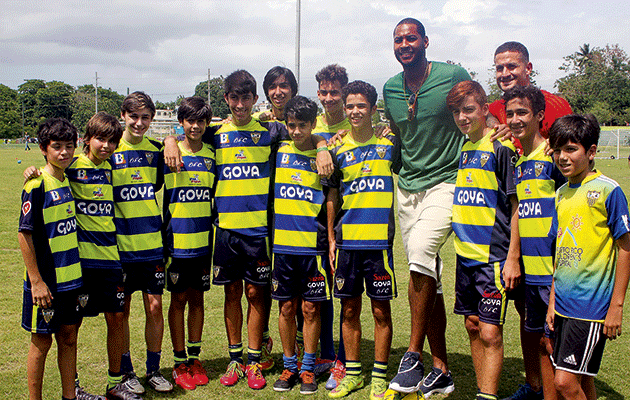With Puerto Rico’s current economic woes causing some observers to predict a mass exodus from the Caribbean island to the US mainland, the backdrop for establishing a new professional football club looks far from appetising. But try telling that to the quixotic figure of basketball luminary Carmelo Anthony.
The 31-year-old New York Knicks forward was recently announced as the driving force behind the surprise emergence of Puerto Rico FC, who are set to join the North American Soccer League next year.
The new club will hope to fill a gap created by the departure of the Puerto Rico Islanders side from the reinvented NASL scene in a fog of uncertainty in 2013. A catalogue of financial difficulties and poorly attended games proved to be decisive in ending the club’s 10-year run as a going concern.
If the Islanders’ experience is any kind of barometer, Anthony may have his work cut out. Despite proving themselves to be one of the NASL’s most successful outfits, the Islanders struggled to attract the kind of crowds their play merited, with an average attendance of just 1,864 in their final campaign. And this was for a side that finished second in the league’s inaugural season, third in 2012 and enjoyed an incredible run to the semi-finals of the CONCACAF Champions League in 2009, prior to the NASL reboot.
Yet Anthony, who is of part Puerto Rican heritage, remains optimistic about the new club, who will be based in Bayamon and play at the same Juan Ramon Loubriel Stadium as the Islanders.
“I am committed to bringing soccer to the next level in Puerto Rico,” he said at the new club’s unveiling. “To the thousands of fans in Puerto Rico that have been waiting for soccer to come back, I can promise a world-class organisation in a world-class league, with a strong social mission to provide kids the opportunity to participate in this growing sport.”
Anthony’s Puerto Rico club will be joined in the NASL ranks next year by Miami FC – who have former Italian World Cup winner Paolo Maldini as one of their investors.
The two new clubs are a coup of sorts for the league, although this is no longer the NASL of Pele, George Best and Franz Beckenbauer that ruled the game in the US in the 1970s. Today’s NASL is the de facto second division of the United States football pyramid, having come out of the cold in 2011 after ceasing some 27 years before.
With no promotion and relegation, MLS is essentially the only show in town where TV is concerned and it attracts all the top talent. The NASL hierarchy, however, consider themselves purists and crave a truly meritocratic pyramid that awards success and punishes failure. That, of course, means teams going up and down the leagues – an idea that has been resisted so far by MLS and its emerging partner league, the third-tier USL.
There are small victories, though, as Miami FC and Maldini proved by securing a NASL franchise in the face of David Beckham and co’s struggle to get a MLS team up and running in the Florida city. The NASL also possesses the most recognisable brand in US soccer in the form of New York Cosmos, with much of the noise the league generates involving Cosmos and their star attraction: former Real Madrid striker Raul.
While the NASL’s two new additions should have taken the current 11-team league up to 13 sides,
that number will almost certainly drop back to 12 as Minnesota United prepare to quit NASL for the draw of MLS and top-tier status.
While the NASL bears an admirable philosophy, pragmatism means MLS will likely continue to rule the roost for some time to come – with or without basketball stars stepping into the void.
By Bryan Kay







